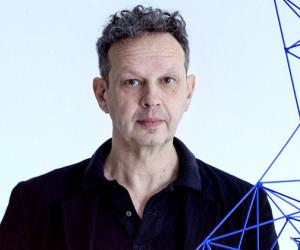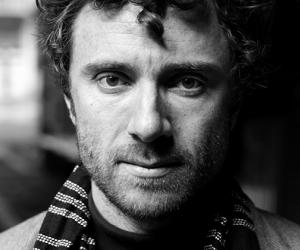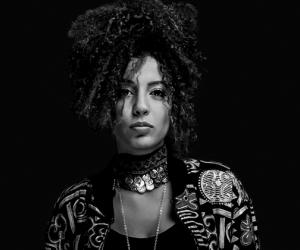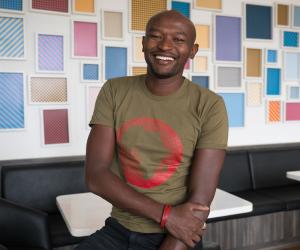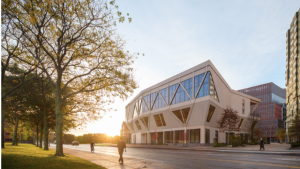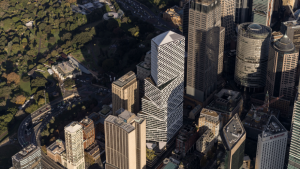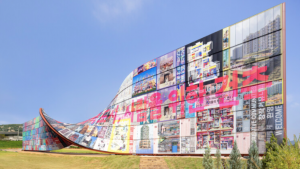In February Cape Town was running high on emotion. Just a week before Design Indaba kicked off, South Africa had finally come to the end of its tether with disgraced president Jacob Zuma, whose tenure had been plagued with corruption charges for over a decade. Following a vote of no confidence, fellow ANC stalwart Cyril Ramaphosa was sworn in with a euphoria so tangible that Design Indaba’s energetic founder Ravi Naidoo likened the atmosphere to the ‘halcyon days of Nelson Mandela’.
But however upbeat the country’s political mood, it was only a temporary distraction from Cape Town’s imminent water crisis. Three years of cumulative droughts (coupled with politically motivated sluggishness) had cleared out the city’s mostly reservoir-based water supplies, meaning that Day Zero (the day the city is predicted to run out of water – the first to do so in the world) was estimated to take place in mid-April.
Given the turbulent backdrop, a heightened sense of optimism – and urgency – surrounded this year’s Design Indaba. Established ‘in the spirit of 1994’ just one year after South Africa’s monumental break from apartheid, the conference brings together a wide net of socially conscious cultural producers (designers, architects, filmmakers, tech entrepreneurs, doctors and this year even the esteemed feminist poet Lebo Mashile) with the two-pronged aim of inspiring South Africa’s creatives to use their talent for society’s benefit and driving investment in the country’s intellectual capital.
As long-time compère Michael Beirut put it, the three-day conference is meant as fuel for 365 days of doing. Understandably given its context, Design Indaba pins its political agenda very firmly to its chest. Design, for Naidoo and his team, should sow the seeds of resistance (this year embodied by speaker Edel Rodriguez, the Cuban illustrator behind the famed melting Trump Time cover), disrupt dominant narratives (via Rwandan filmmaker Sunu Gonera’s Afrofuturist, unsanitised portrayal of South Africa’s townships) and be a catalyst for positive change.
This year, big hitters included the contagiously enthusiastic material ecologist Neri Oxman, Chilean architect and Pritzker Prize-winner Alejandro Aravena, set designer and Kanye collaborator Es Devlin and London’s Thomas Heatherwick, whose ‘broken Kit Kat finger’ roof for King’s Cross’s imminent Coal Drops Yard received audible gasps and a standing ovation. Alongside them were a raft of lesser known but equally inspiring voices.
User experience designer Mark Kamau presented the tech products his Kenyan start-up BRK has designed to get the 800 million Africans without access to the internet online, while South African doctor William Mapham shared the heartbreaking story behind Vula, a chat-style mobile app he developed to connect rural health workers with much-needed specialists. His drive was personal – as a student working in the poor Eastern Cape, Mapham had referred a patient to an eye specialist. On returning seven years later, then as a trained ophthalmologist, he found the same man, still sick, who was overjoyed to finally meet a specialist. Mapham realised that he had had the drugs to treat the man’s condition all those years ago, but not the knowledge.
Design Indaba also invites ten cherry-picked design stars of the future – some like Kenyan entrepreneur Leroy Mwasaru as young as 19 – to flex their intellectual muscle as part of its Global Grads programme. Highlights this year included Mexican designer Renata Souza Luque, who presented Thomy, a child-friendly insulin kit complete with injection site temporary tattoos, and Polish architect Iwo Borkowicz, whose nifty social housing concept harnesses the power of gentrification to have a positive impact on the local community.
In his proposals a small hotel is incorporated into a flexible floorplan, helping those on low incomes to pay off their mortgage, after which the rooms can be subsumed into the houses. Seeing itself as an incubator, Design Indaba provides these Global Grads with coaching and help in crafting a compelling speech.
Even for the more established creatives, Indaba has a hands-on approach to each performance, encouraging speakers to dip into the ample production budget to realise burning creative desires. For Egyptian fashion designer Amna Elshandaweely, this meant a catwalk show of her Arab Spring-inspired Cairopunk collection with live graffiti artists, while Sunu Gonera brought his collaborator, rapper Khuli Chana, on stage for an impromptu set. The festival ended with a moving musical tribute to late jazz musician, former Indaba speaker and national treasure Hugh Masekela.
Apart from one clanger – a 2001 Space Odyssey-inspired zip wire entrance and self-involved musical number from former Bang & Olufsen creative director Johannes Torpe – these interjections only amplified the festival’s buzz. Remarkably given its size, Design Indaba retains an intimate and personable atmosphere. The over-rehearsed arrogance of TED is ditched for a more humble approach – something especially noticeable this year as non-Capetonians justified their presence in the water-scarce city. Fittingly, many speakers reframed how they spoke about their practice to pass on valuable sparks to the eager Indaba audience, both in the affluent, largely white Artscape auditorium in Cape Town and live streams in Johanesburg, Durban, Port Elizabeth and Potchefstroom.
Even Tom Dixon eschewed a standard career highlights run-through, at one point dismissively waving away slides of ‘some chairs’ in order to focus on his more disruptive work, such as his Ikea-hacking with design students and the development of the Accretion chair. This experimental prototype was made by running a small electrical current through a canal-submerged wire frame. The charge attracted mineral deposits to form a natural concrete material with a craggy, coral-like appearance.
Water was a common thread this year, no doubt through the meticulous curation of Naidoo and his team. Global Grad and founder of biomaterials research group AlgiKnit Aleksandra Gosiewski presented a fully recyclable bioyarn made from fast-growing kelp (plus an entirely biodegradable pair of trainers). Both can be broken down by micro-organisms to feed the next generation of products – vital future-thinking given that fashion is the second most polluting industry in the world.
In contrast, London’s Studio Swine chose to highlight some of its more accessible, low-tech projects. Two stools demonstrated to the Indaba audience that design objects can be made by those with minimal resources. One was a fisherman’s perch made from plastic dredged from the ocean and the other designed for Sao Paolo street market traders from coke cans and a furnace fuelled by waste vegetable oil.
Just as Studio Swine’s furnace blueprints are open-source, many of the projects to come out of speaker Lonny van Ryswyck’s Eindhoven studio, Atelier NL, also invite communities to engage in the making process. For ongoing project To See a World in a Grain of Sand, van Ryswyck asked people to send her sand from across the world, which she will later melt into glassware with a natural, location-specific hue. Indaba’s Ravi Naidoo first reached out to van Ryswyck by sending her grains from Western Cape’s depleted, desert-like Theewaterskloof Dam.
Peter Veenstra, founder of Rotterdam’s landscape-focused LOLA Architects, also spoke about resource scarcity, from developing a stable ecosystem in the Chernobyl exclusion zone, to a lush garden he designed in an Israeli desert that uses the shell of a former quarry to create a microclimate rather than heavy irrigation. Veenstra also debuted his proposals for Cape Town’s answer to the High Line – a public garden stretching across the concrete of Luthuli Plaza, which has been masterminded by Design Indaba.
The centrepiece will be a water-neutral dome of ramelias and spekboom, irrigated (much to the audience’s amusement) using the recycled urine of the city’s bureaucrats, pumped from the nearby civic centre.
A clear commitment to legacy, as with Luthuli Plaza, is what makes Design Indaba quite different from festivals of its ilk. Spritely string-puller Naidoo encourages speakers to explore and engage with the country’s issues, and leave their mark. Snøhetta returned this year to reveal Arch for Arch – a spherical timber public artwork in celebration of Desmond Tutu. The colourful, typographic playground made by Morag Myerscough to brighten Artscape’s paved grounds was repurposed post-conference for a kids’ centre in suburb Zonnebloem. Even Cape Town’s latest waterfront addition, Thomas Heatherwick’s transformation of a former grain silo into the esteemed Zeitz Museum of Contemporary Art Africa, owes its existence to Design Indaba, with Naidoo, in Heatherwick’s words, acting as a ‘midwife’ to the historic project.
Through its energy and purpose, Design Indaba asks audience and speakers alike to commit to its vision of design as a tool for change. And although Naidoo can’t take credit for the rain that gushed down at the end of the conference, pushing back Day Zero with such perfect timing that it felt rehearsed, Design Indaba is irrevocably altering its landscape, not just talking the talk.

